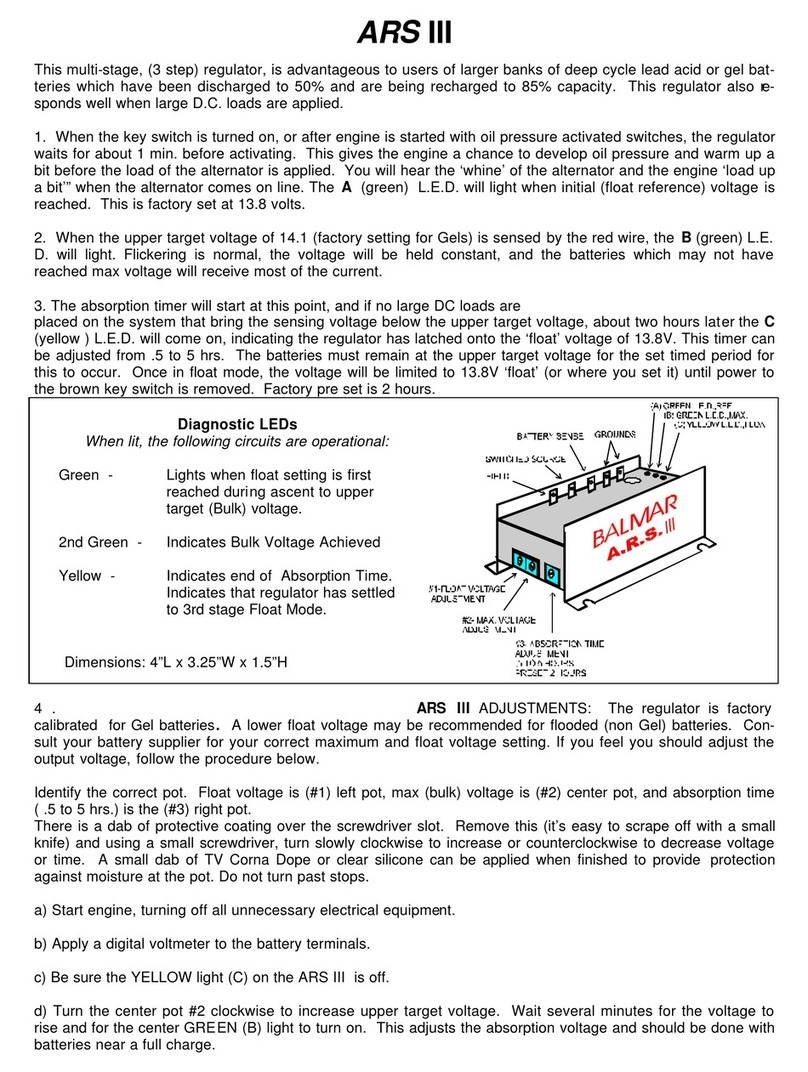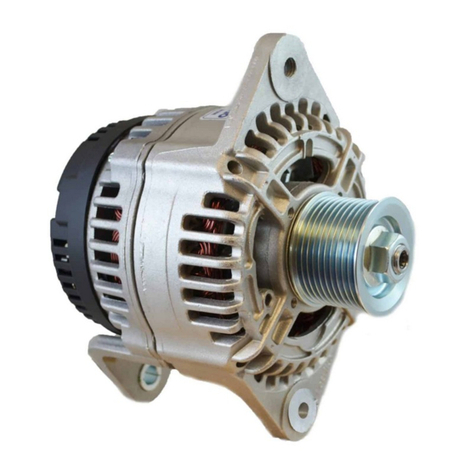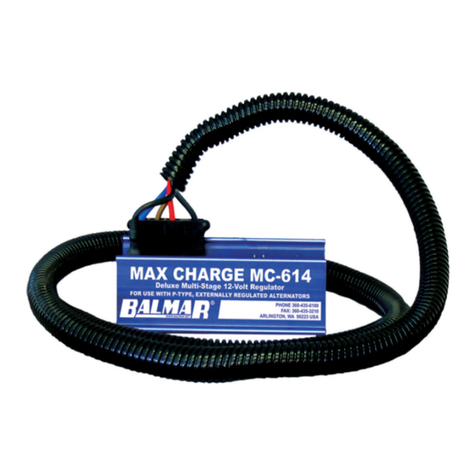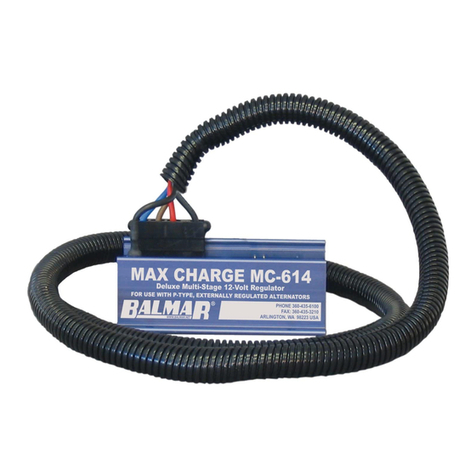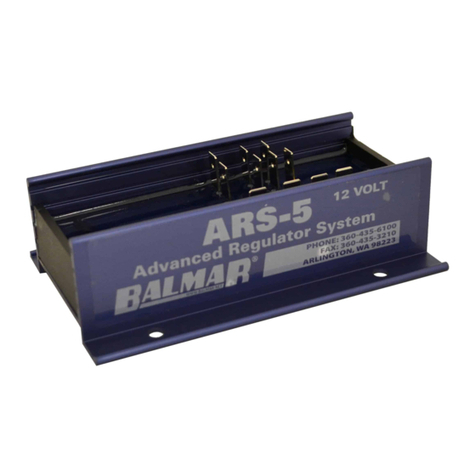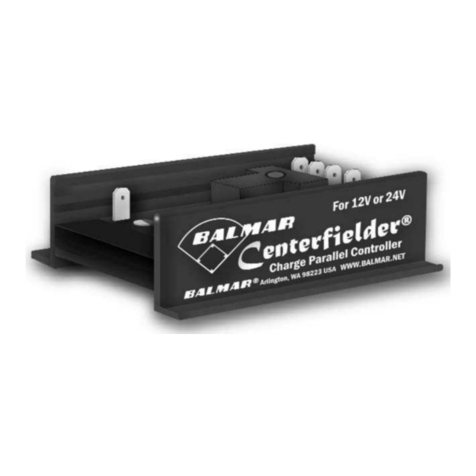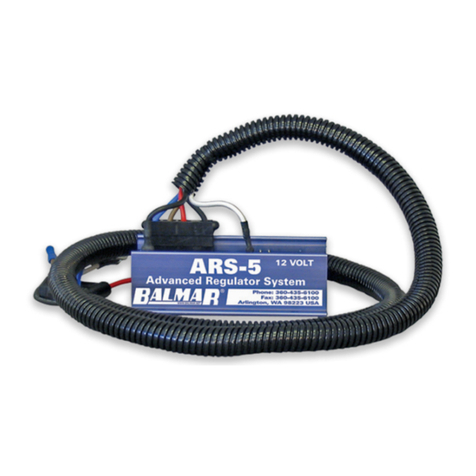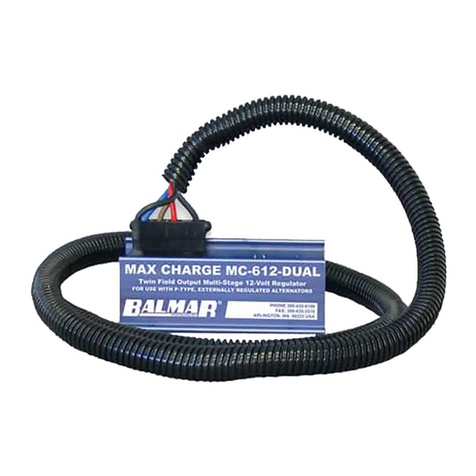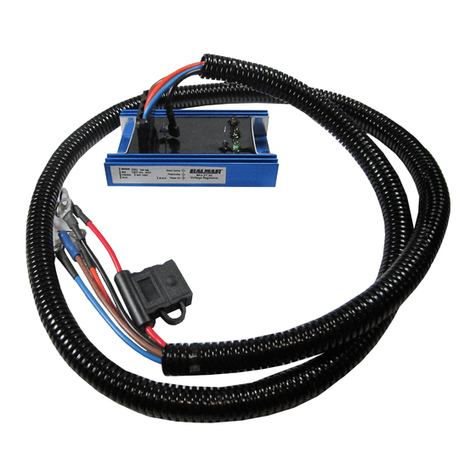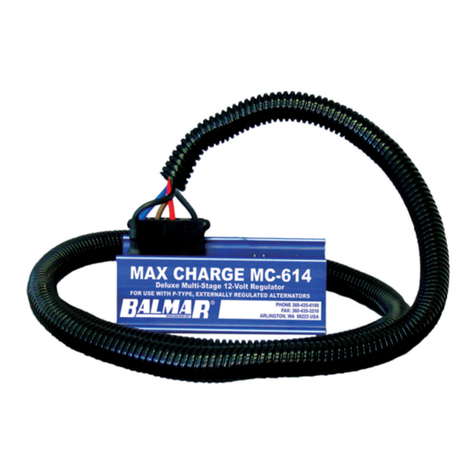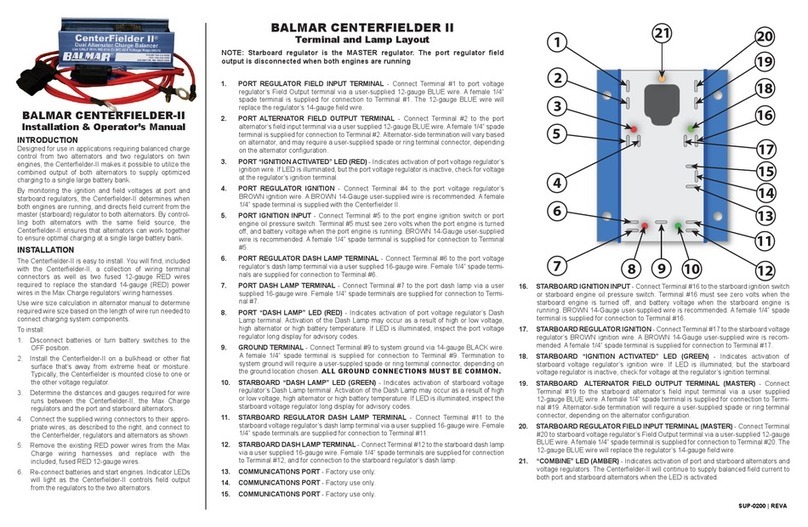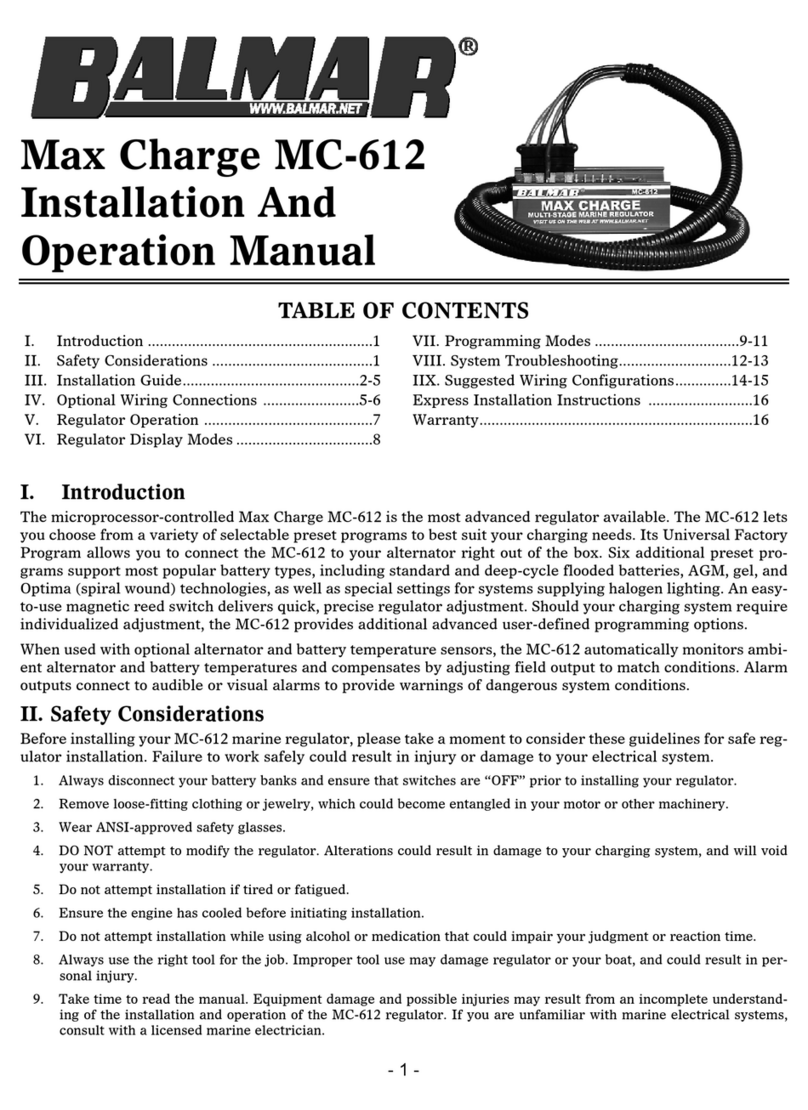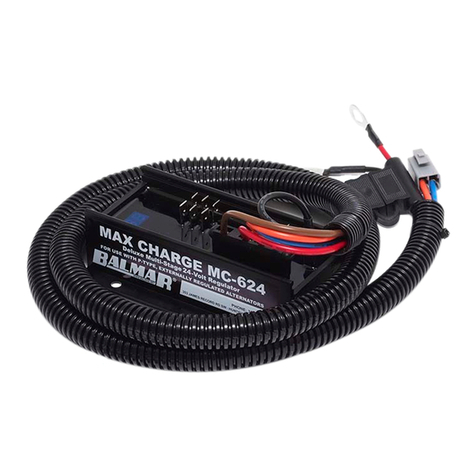VIII. Advanced
Programming
Advanced programming levels can
be accessed when the MC-624 is in
Long Display mode. To access:
1. With regulator in Long Display
mode, ACTIVATE-HOLD until
the “Pro” display code appears.
RELEASE. The “PrA” display
code will appear. (CAUTION: If
the switch is held too long,
the regulator will return to the
preset program adjustment
mode). Once in advanced pro-
gram mode, the display will
cycle through the the individual
advanced programming selec-
tions (see Figure 14).
2. When the desired advanced
program mode is reached,
ACTIVATE-HOLD. The display
will scroll through the available
time or voltage value selections. - 5 -
Figure 13 - Long Display (LD) attributes as displayed on digital numeric readout.
Figure 14 - Advanced Programming (PrA) as displayed on digital numeric readout.
VII. Additional Displays
Charging Stages
The MC-624 utilizes up to 12 individ-
ual stages to ensure proper charg-
ing. Each stage may contain a spe-
cific voltage or time value, or a com-
bination of values which may be
implemented by the regulator’s
microprocessor as it monitors your
battery’s state of charge. These
stages are displayed in both Short
and Long Display modes, and are
described in Figure 12.
Long Display
At any time during the Short
Display’s continuous cycle, addition-
al data for various operations and
diagnostic information can be moni-
tored by accessing the numeric read-
out’s Long Display mode.
To access the Long Display, ‘ACTI-
VATE-RELEASE’ the reed switch
while the Short Display is cycling.
The numeric LED will immediately
return to the “BAL” code and start
cycling through the Long Display.
See Figure 13 for code definitions.
Once the Long Display has cycled
through all of its information modes,
the display will automatically revert
to the Short Display.
LD Mode 1 - Readout displays “BAL”
(Short for Balmar.)
LD Mode 2 - Regulator model.
Readout displays “624”.
LD Mode 3 - Program level. (P)
Displays program currently in memory.
LD Mode 4 - Battery type. Readout
displays abbreviated battery type.See
Figure 10 for descriptions.
LD Mode 5 - Charging stage Displays
the specific stage of the charging
cycle. See Figure 13 for descriptions.
LD Mode 6 - Battery voltage.
Shows current system voltage.
LD Mode 7 - Calculated (Target) volt-
age based on program mode.
LD Mode 8 - Revision number.
Displays software version.
LD Mode 9 - Battery #1 temp.
Followed by the sensor reading
in degrees(Celcius).
LD Mode 10 - Battery #2 temp.
Followed by the sensor reading
in degrees(Celcius).
LD Mode 11 - Factory use only.
LD Mode 12 - Factory use only.
LD Mode 13 - Run time. “Hr ”
code is followed by a numeric
readout in 1/10-hr increments.
LD Mode 14 - Explanatory
mode. May be followed by one or
more diagnostic codes. See
Figure 17 for details.
PrA Mode 1 - Advanced program
mode indicator.
PrA Mode 2 - Start delay “DL”. Adjusts
seconds before ramp up.
PrA Mode 3 - Bulk voltage control. “Bv”
code is followed by volt reading. Adjust up
or down.
PrA Mode 4 - Bulk time control. “Bc”
code is followed by time reading. Adjust
up or down.
PrA Mode 5 - Absorption voltage control.
“Av” code is followed by volt reading.
Adjust up or down.
PrA Mode 6 - Absorption time control.
“Ac” code is followed by time reading.
Adjust up or down.
PrA Mode 7 - Float voltage con-
trol “Fv”. Followed by time read-
ing. Adjust up or down.
PrA Mode 8 - Float time control.
“Fc” code is followed by time
reading. Adjust up or down.
PrA Mode 9 - Amp Manager
control. See details for Amp
Manager on following page.
PrA Mode 10 - Equalization
Voltage control. See details for
Equalization on following page.
PrA Mode 11 - Equalization
Time control. See details for
Equalization on following page.
Stage 1 - Start Delay. Provides a 45-
second delay before load is placed on
engine and belts. Adjust time in PrA*.
Stage 2 - Soft Ramp. One minute volt-
age ramp minimizes belt slippage.
Non-adjustable.
Stage 3 - Bulk. 30-minute set period.
Program determines charging voltage.
Time/voltageadjustable in PrA*.
Stage 4 - Calculated Bulk. Time varies
by state of charge at end of Stage 3.
Adjustable in PrA*.
Stage 5 - Ramp Down. Transition
from Bulk to Absorption stage. Non-
adjustable.
Stage 6 - Absorption. 30-min. set time.
Preset program sets charging voltage.
Time/voltage adjusts in PrA*.
Stage 7 - Calculated Absorption.
Time varies by state of charge at
end of Stage 6. Adjust in PrA*.
Stage 8 - Ramp Down.
Transition from Absorption to
Float stage. Non-adjustable.
Stage 9 - Float. 30-minute time
period. Program sets charging
voltage. Time/volts adjust in PrA*.
Stage 10 - Calculated Float. Time
& voltage based on state of charge
at end of Stage 9.Adjust in PrA*.
Stage 11 - Ramp to Equalize.
Batteries should be at full charge
before initiating eqalization.
Stage 12 - Equalization. Time
and Voltage adjustable in PrA*.
See battery mfg. limits for time
and voltage values. User set.
PrA* - Time and/or voltage adjustments can be made in the Advanced Program mode.
Figure 12 - Charge stage codes as seen in Short and Long displays.
Advanced Programming and Diagnostics
